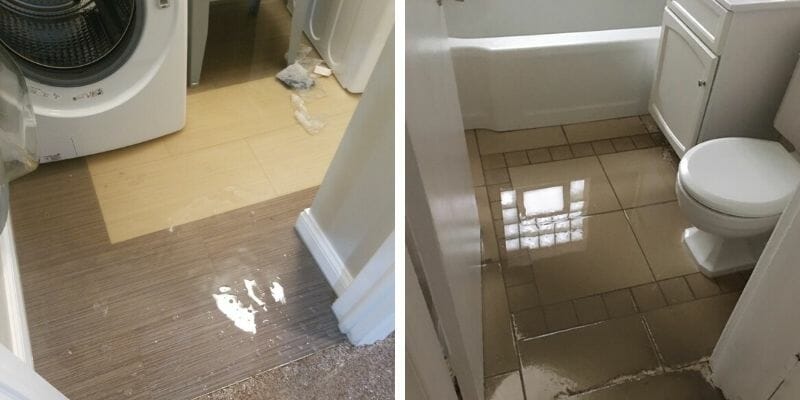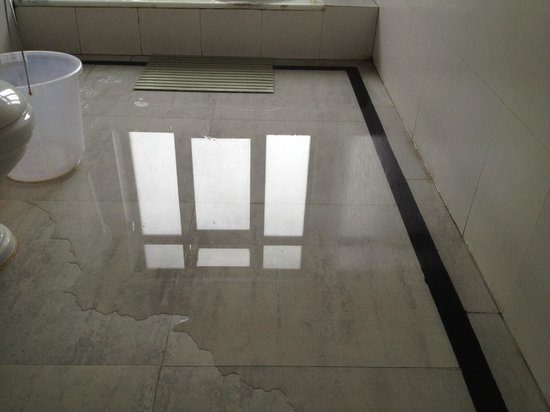What are your concepts on How to Repair and Prevent Bathroom Water Damage??

Water damage typically occurs in the washroom due to the water utilized day-to-day. Occasionally, the damage could be a little mold from the shower. Other times, it's large damage on your flooring. Whatever it is, it is always excellent to know the reason as well as stop it before it takes place.
This guide will experience a few of the usual reasons for water damage in the restroom. We will certainly additionally examine what you can do to avoid these reasons from harming your restroom. Let's dive in.
5 Common Reasons For Water Damage in Washrooms
These are the usual factors you would have water damage in your bathrooms and also exactly how you can find them:
Burst or Leaking Pipelines
There are lots of pipelines bring water to various parts of your washroom. Some pipelines take water to the commode, the sink, the faucets, the shower, and numerous other places. They crisscross the small area of the bathroom.
Occasionally, these pipelines might get rustic as well as burst. Other times, human activity can trigger them to leak. When this happens, you'll locate water in the edges of your washroom or on the wall surface.
To find this, watch out for gurgling walls, mold and mildews, or mold. Call a professional emergency situation plumbing professional to repair this when it happens.
Cracks in your wall surface floor tilesv
Bathroom wall ceramic tiles have been specifically designed for that function. They shield the wall surface from wetness from individuals taking showers. Nonetheless, they are not indestructible.
Often, your washroom wall surface floor tiles fracture and also permit some wetness to permeate into the wall. This can possibly damage the wall if you don't take any kind of activity. If you see a split on your wall ceramic tiles, repair it instantly. Don't wait till it destroys your wall surface.
Overruning commodes as well as sinks
As human beings, sometimes we make blunders that can trigger some water damage in the restroom. For example, leaving your sink faucet on can create overruning and damage to other parts of the restroom with dampness.
Additionally, a malfunctioning commode could cause overflowing. For instance, a busted commode handle or other parts of the cistern. When this happens, it might damage the floor.
As soon as you discover an overflowing sink or toilet, call a plumbing professional to aid deal with it instantly.
Roofing system Leaks
In some cases, the problem of water damage to the bathroom could not originate from the shower room. For example, a roof leakage could cause damages to the shower room ceiling. You can identify the damage done by considering the water spots on the ceiling.
If you find water stains on your ceiling, inspect the roofing system to see if it's harmed. Then, call an expert to help fix the issue.
Excess Wetness
It's cool to have that long shower and also splash water while you dance around as well as imitate you're performing, however sometimes these acts could create water damage to your bathroom.
Spraying water around can cause water to head to corners and form molds. View just how you spread out excess wetness around, and when you do it, clean it up to stop damages.
Conclusion
Water damage to your bathroom can be irritating. Nevertheless, you can handle it if you protect against a few of the reasons stated in this overview. Call a specialist emergency situation plumbing if you discover any kind of extreme damages.
How to Repair a Water-Damaged Wall in the Bathroom
All you need to know to repair bathroom wall water damage – from identifying the water source to finishing the repair professionally. If you don’t act quickly to resolve a water damage problem, you could find that it develops into a mold issue and/or cause structural damage to your home. Follow this guide to repair your bathroom before it's too late.
All you need to know to repair bathroom wall water damage
Water damage is a common household problem, and one that, if left unrepaired, can quickly lead to structural problems and health issues. The two most likely rooms where water damage may occur is the bathroom and the kitchen – where water is used often and there is high humidity.
What is water damage?
It is easy to think of water damage as caused by a flood or leaking tap or burst water pipe. However, when water damage is assessed, there are three main categories into which water falls (as classified by the American National Standards Institute). These categories are defined as:
Category 1 Water – ‘Clear Water’
This is sanitary water. There is usually no major threat to health by washing with this water, drinking it, or inhaling if it is streaming. Most water that enters your home will be category 1 water, while most water leaving your home will be either category 2 or 3 water. It may also come from melting snow, rainwater and water tanks.
Damage caused by this type of water can usually be repaired or restored, though this doesn’t mean that there are no potential health issues.
Category 2 Water – ‘Grey Water’
This is contaminated water – sometimes considerably so – and will cause illness if consumed or if it comes into contact with your skin. Water damage in this category is often caused by overflows from toilet bowls, and damage to washing machines and dishwashers. While damaged items might still be repaired or restored after damage by grey water, it is more difficult and more expensive to do so.
If the water damage in your home has been caused by grey water, it is advisable to have repairs made by professionals.
Over time, grey water will deteriorate and become black water.
Category 3 Water – ‘Black Water’
Category 3 water, also known as black water, is highly contaminated and a great risk to health. This may contain raw sewage, heavy metals, and other toxic substances. It will smell terrible.
If this is the water that has caused damage in your bathroom, do not touch it. Stop the water flowing if possible, seal the room and call the experts: it really isn’t worth the risk of ill health and disease that could be fatal. It is very unlikely that items can be repaired or restored if they have been damaged by black water.
https://www.porterscleaning.com/blog/how-to-repair-a-water-damaged-wall-in-the-bathroom/

How to Repair a Water-Damaged Wall in the Bathroom
All you need to know to repair bathroom wall water damage – from identifying the water source to finishing the repair professionally. If you don’t act quickly to resolve a water damage problem, you could find that it develops into a mold issue and/or cause structural damage to your home. Follow this guide to repair your bathroom before it's too late.
All you need to know to repair bathroom wall water damage
Water damage is a common household problem, and one that, if left unrepaired, can quickly lead to structural problems and health issues. The two most likely rooms where water damage may occur is the bathroom and the kitchen – where water is used often and there is high humidity.
What is water damage?
It is easy to think of water damage as caused by a flood or leaking tap or burst water pipe. However, when water damage is assessed, there are three main categories into which water falls (as classified by the American National Standards Institute). These categories are defined as:
Category 1 Water – ‘Clear Water’
This is sanitary water. There is usually no major threat to health by washing with this water, drinking it, or inhaling if it is streaming. Most water that enters your home will be category 1 water, while most water leaving your home will be either category 2 or 3 water. It may also come from melting snow, rainwater and water tanks.
Damage caused by this type of water can usually be repaired or restored, though this doesn’t mean that there are no potential health issues.
Category 2 Water – ‘Grey Water’
This is contaminated water – sometimes considerably so – and will cause illness if consumed or if it comes into contact with your skin. Water damage in this category is often caused by overflows from toilet bowls, and damage to washing machines and dishwashers. While damaged items might still be repaired or restored after damage by grey water, it is more difficult and more expensive to do so.
If the water damage in your home has been caused by grey water, it is advisable to have repairs made by professionals.
Over time, grey water will deteriorate and become black water.
Category 3 Water – ‘Black Water’
Category 3 water, also known as black water, is highly contaminated and a great risk to health. This may contain raw sewage, heavy metals, and other toxic substances. It will smell terrible.
If this is the water that has caused damage in your bathroom, do not touch it. Stop the water flowing if possible, seal the room and call the experts: it really isn’t worth the risk of ill health and disease that could be fatal. It is very unlikely that items can be repaired or restored if they have been damaged by black water.
https://www.porterscleaning.com/blog/how-to-repair-a-water-damaged-wall-in-the-bathroom/
We were shown that article on How to Repair and Prevent Bathroom Water Damage? from an associate on our other web address. Enjoyed reading our blog? Please share it. Help others check it out. Thanks for your time spent reading it.
Always ready, contact!